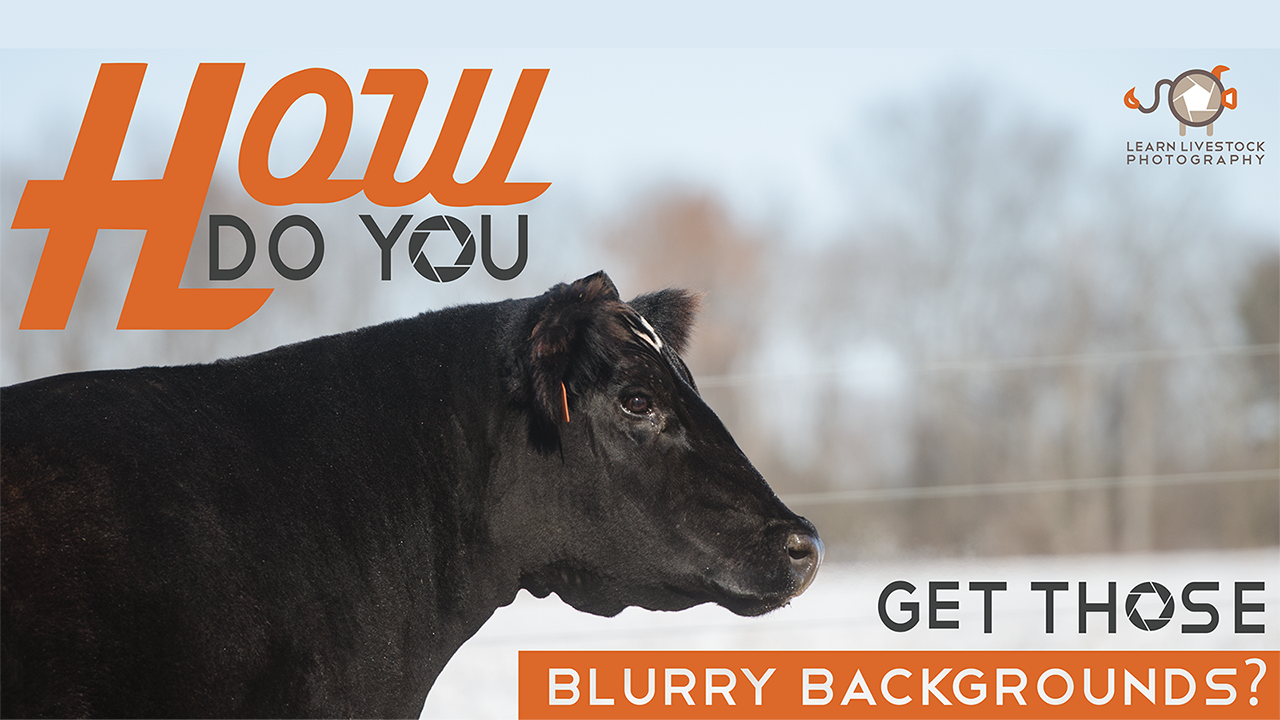How Do You Get Those Blurry Backgrounds?

Livestock photography is, in many ways, a form of portraiture. Think about headshots or school pictures. It's the same photo over and over again, just a different kid at a different school, on a different day. In the same way, livestock photos are just a different animal, in a different place, on a different day. The basic photo is the same though. Head up, ears forward, legs positioned properly and that one signature look that sets the pros apart from everybody else; blurry backgrounds.
Yes, achieving those blurry backgrounds is a function of the aperture in your lens, and while it would be nice to have the $2,500 70-200 f2.8 lens, it is not imperative if you understand the principles of creating a blurry background. There are two main principles in play:
1. Aperture Opening - The wider the aperture opening of your lens, the more capable your lens is of achieving the blurry background look. Lenses with a fixed aperture number (also known as primes) are the best for this when your camera settings and framing are on point.
2. Focal Distance - Focal distance impacts the blurry background look in three ways. First, it changes the effective aperture of kit lenses and other lenses with variable aperture. The more you zoom, the smaller your lens opening will become. [Primes are different, as the lens opening remains the same throughout the zoom range.] There's good news though, because second, the more you zoom, the thinner the plane of focus becomes meaning less of the background of your image will be in focus. More good news? The third way focal distance impacts the blurriness of your backgrounds is something I call 'background compression'. It means the more you zoom, the more the background is pulled into the frame and those elements that were once small and clear become bigger and blurrier.
Here are the keys to achieving the blurry backgrounds you desire. First, shoot wide open (within reason). Second, get the animals away from the camera and use your zoom to fill the frame with the animal. Crop it in camera. Third, keep the animals away from background elements like fences.
If you follow these keys you'll get the most from your lens whether you're shooting a $200 kit lens or a $2,000 prime.
Get our best tips delivered to your inbox.
Join our mailing list to receive weekly livestock photography tips delivered directly to your inbox. Take Better Photos. Make More Money.


